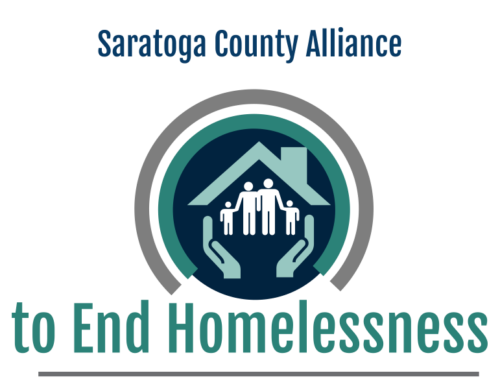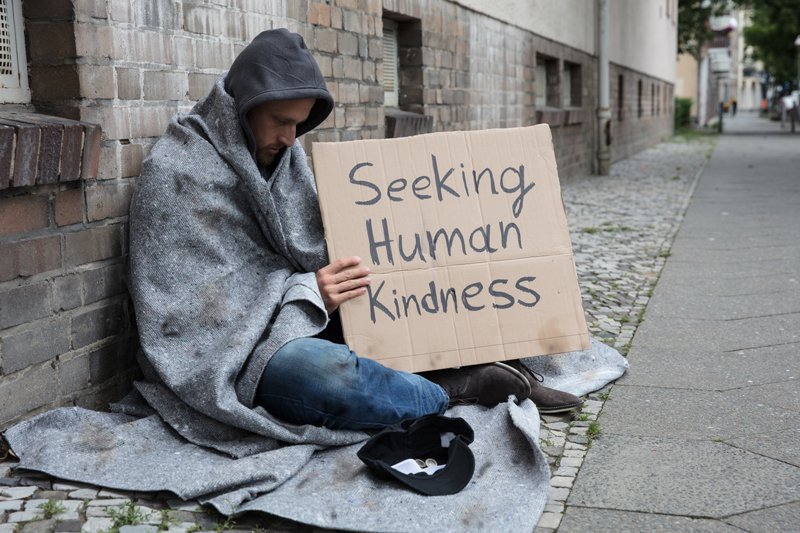
The Saratoga County Alliance to End Homelessness contributed this article that was posted in the Saratoga Today, Challenge Accepted.

The rise of homelessness in Saratoga is both troubling and frustrating but not surprising, given the rise of Saratoga’s fortunes over the last two decades. A thriving economy lends itself to increases in housing costs, which in turn, leads to an increase in the number of local hard working families who can no longer afford housing. This pattern is not unique to Saratoga; it has repeated itself in similar communities across the country. What is unique to Saratoga however is that it benefits from a significant amount of resources; a deep level of community engagement; and a sincere desire by local agencies to shift their interventions away from being crisis-oriented towards a system that is focused on prevention and permanent housing.
Saratoga Today invited the community to collectively respond to the homelessness challenge in our midst. One agency alone cannot solve homelessness, it takes a coordinated effort across multiple agencies and sectors. In the fall of 2019, a coalition was formed. Over thirty agencies, from non-profits to the public and private sectors, agreed to work together to address homelessness in Saratoga. We are grateful to Saratoga Today for providing this forum for the coalition to communicate and collaborate with our community. We begin by dispelling some of the myths about homelessness.
Myth #1:
Most people who are homeless have severe mental health and/or addiction issues, and they choose to stay homeless. This common belief arises because those who are the most visibly homeless (e.g., living on the streets, sidewalks, in parks) often do exhibit these behaviors/challenges. These individuals are considered “high needs” and require intensive outreach and support services to help them navigate homelessness. In Saratoga, multiple times a day, outreach teams work hard to motivate these individuals to accept services and find a different path. It is not an easy job, as anyone who’s attempted to change the destructive behavior of a loved one well knows. However, high needs individuals, those most visible to you when you visit downtown Saratoga, are the smallest percentage of the homeless population (10% – 20%). The vast majority of those experiencing homelessness, are individuals and families that you probably don’t notice; those who simply cannot afford housing in this market. Many of them are employed, leaving the shelter every day to go to work, trying to save enough money to rent an apartment.
Myth #2:
It will cost too much to prevent and end homelessness by helping people pay rent (short or long-term). The aggregate cost of maintaining a person’s homelessness through the network of disconnected crisis agencies (e.g., emergency shelters, police interactions, and emergency rooms) typically costs three to four times more than it would to help someone pay their rent. This is true even when you include the cost of intensive services for those who need them to retain housing. When you stop and think about how many agencies that a person experiencing homelessness interacts with (by default or by design), and the true cost of those interactions, this economic reality becomes obvious. As we iterate to solve problems, we must follow what the data tells us—and in this case that means investing in access to, and preservation of stable affordable housing.
Communities around the country are proving that it is possible to end homelessness (defined as reaching and sustaining functional zero), and I truly believe Saratoga can do the same. It will take long-term, laser-like focus, political will, and—over time—shifting investments away from expensive crisis systems and towards prevention and housing (as well as employment services and access to healthcare). The amazing provider agencies in Saratoga, the faith community, and the City and County, have done, and continue to do, incredible work on this issue, much of it invisible to the casual observer.
Over the next few months, a federal CARES Act allocation will be available to Saratoga County for homeless response in the wake of the COVID crisis. This will be a county-wide collaborative effort by committed partners and organizations. Under the direction of Saratoga County Department of Social Services the CARES Act funds will further build out a system to address COVID-19 and to end homelessness, not manage it. The emphasis will be through street outreach, supporting emergency shelter systems, homeless prevention, and rapid rehousing homeless households in permanent housing. We will keep you informed about this work via a monthly update in Saratoga Today. Dear community member, please stay tuned for more stories and information as the months unfold.
Learn more at Saratoga County Alliance to End Homelessness.
RISE is proud to be a participating agency of the Saratoga County Alliance to End Homelessness.

